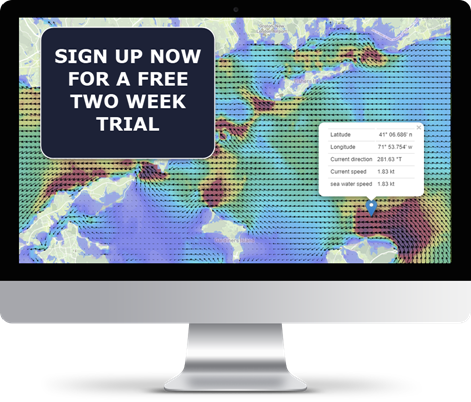The creation of ocean current maps depend on the measurement of sea level, which is the base level for measuring elevation and depth on Earth.
The English Channel is home to some of the strongest and most complex tides in Europe. It is one of the most heavily trafficked locations in the world, with many different types of vessels transiting east and west through the Channel or crossing between ports in southern England and Europe.
Topics: English Channel
Long Term Weather Forecasting Doesn’t Have to Be a Guess
No matter how advanced technology becomes, weather forecasting will always carry a degree of uncertainty. Nature is unpredictable, but by combining powerful technology with data, we can produce reasonably reliable evidence-based forecasts for up to ten days.
Did you know that 90% of coastal seas have no tidal data available?
Traditionally, there has been little tidal information available to the public other than height predictions for major (standard) and minor (secondary) ports; even fewer tidal current predictions are available to Mariners other than a limited number of tidal diamonds and tidal stream atlases. These data have traditionally been published by official sources, such as Hydrographic Offices.
Although useful for indicating conditions at the start and end of a journey, this data on its own doesn't provide the level of detail that mariners need for their chosen waterborne activity. In this article, we cover the traditional methods for tidal measurement and their shortcomings and modern technological advancements that can revolutionise the maritime industry in terms of tidal information.
Topics: tides, tidal model, high resolution model, tide-surge forecast
The Currents in Singapore Strait are Extremely Complex. Here's Why.
At 16km wide, and stretching 105km long between the Strait of Malacca and the Karimata Strait, the Singapore Strait is a crucial gateway between Asia and Europe. Due to the high number of ships transiting the area, the Singapore Strait can become incredibly congested and requires a tight traffic management system to ensure that vessels are coming into port at the right time, every time.
Topics: currents, tides, speed optimisation, route optimisation, high resolution model, Malacca Singapore Straits, ship efficiency
Like many sailing fans, we can't wait for the action to begin in the 36th Americas Cup in Auckland. Wind speed and direction, as you'd expect, will be the main factor that determines sail and foil choices, and of course, tactics on the course. What about tidal currents? With the speeds that these boats go, you'd be forgiven for thinking that current will be irrelevant.That's not the case though. Here's why:
Topics: America's Cup, high resolution model, yacht racing
Coastal or Ocean Currents - Do you know the difference?
Whatever craft you sail, currents can have a significant effect on your transit times across an ocean, particularly where the major ocean currents such as the Kuroshio and Gulf Stream flow. However, the beginning and end of most ocean crossings transit coastal waters, where there can be strong tides. Understanding how and why each type of current forms and where they occur increases the likelihood of a successful passage - whether it be a 'just-in-time' arrival on a ship or a podium finish in a yacht race.
Credit: NASA
Topics: currents, yacht, tides, ship efficiency, ocean
How Hindcast Weather and Ocean Data Can Optimise Vessel Performance
Topics: sailing, yacht, efficiency, speed optimisation, optimised route
New! Narragansett Bay high resolution tidal model
Due to high demand we have released a limited edition high resolution tidal model for Narragansett bay and Rhode island Sound in time for the Rolex New York Yacht Club Race Week. The region covered includes all racing areas in the Bay and to the South at 110 m resolution at 60 minute intervals.
Data is available as GRIBs or PDF images like the ones below, for the North and South race areas.
Topics: sailing, yacht, tidal model, high resolution model, yacht race, NYYC, Narragansett Bay
We are very excited to release our new model of Long Island Sound. With a resolution of 110m the model covers whole Sound in incredible detail, showing for the first time how the tidal currents flow around key locations across the region.
Topics: currents, Expedition, sailing, yacht, racing, optimised route, high resolution model, grib, yacht race, Vineyard Race



.png?width=800&name=H&D%20_%20Blog%20Hero%20Image%20Template%20(8).png)




.png?width=800&name=H&D%20_%20Blog%20Hero%20Image%20Template%20(22).png)





